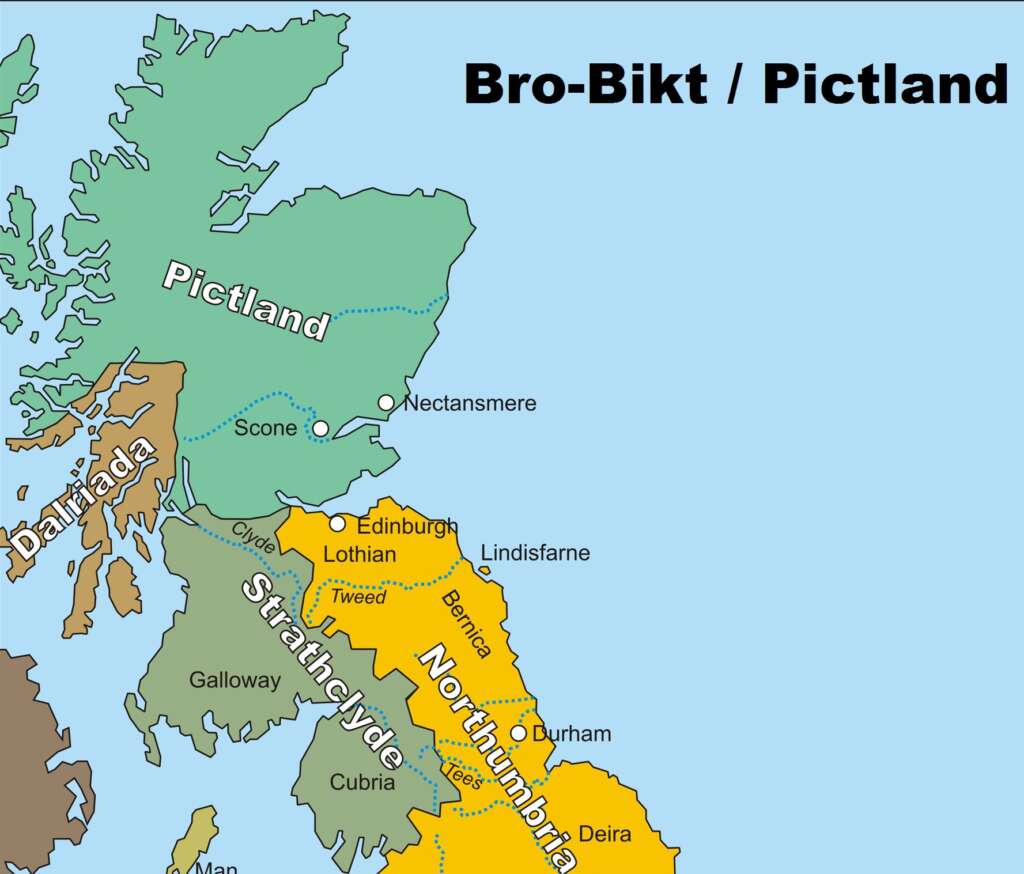Picts History
The picts were people who lived north of the Forth river in Pictavia, caledonia (modern Scotland), before the Scots centuries ago.
The earliest known reference to Pict is in 297 AD, in the panegyric of the Roman creator Eumenius. In addition, “Picti” is often referred to as “painted” or “tattooed,” depending on the Latin meaning of the word itself, but the etymology of the word may be related to Celtic languages: The Celts who spoke the Gaelic language called the Picts “cruithne”, “Kruenya”, after their language, while the Brittonian Celts called them “prydyn”, from which “Britain” and “Britain” came.
In the absence of written records, other archaeological remains, such as Pictish Stones and jewellery designs they left behind, provide a window into Pict society: it is likely that the Picts had established a number of small kingdoms that occasionally clashed with each other.

Scholars believe pictavia (the area inhabited by the Picts) covered all of present-day Scotland north of the River Clyde and beyond Argyle. Evidence suggests the existence of two large kingdoms, one in the north at present-day Mounth centered on the county of Morley, and the other in the south with Forteviot as its capital.
Pictish Warrior
The Picts were a late Iron Age people who lived in what is now northern and eastern Scotland. They were part of the Celtic people of the British Isles at that time. Pict warriors were feared not only by the surrounding tribes, but by the pompous Legions of Rome. The Ancient Greek historian Dionysius, during the reign of Julius Caesar, said the Picts fought “as fearsome as wild beasts.” When the battle was in the mountains and forests of northern Europe, the Roman soldiers in their unwieldy armor were at a great disadvantage to the Picts.
Equally frightening on the battlefield were the Celtic horns, which played throughout the battle, inspiring the Picts and intimidating their opponents. In addition, picts also liked to cut off the heads of their slain enemies and hang them around their waists, which, according to Celtic culture, gave them courage and anger while simultaneously terrifying their enemies.

Pictish Stone
The astounding Pictish symbols are the primary source of proof for the Picts’ existence. At least 50 of these distinctive motifs have been etched on bones, cave walls, stones, and exquisite silver jewelry. These symbols appear to have been used to represent identities, most likely names.
The Pictish stones can basically be divided into three: ClassⅠstones (5th — 7th Century) are engraved with simple Pictish symbols. Class Ⅱ stones (7th — 8th century) mostly being carved in relief on treated slabs, maybe for use as part of a preaching venue, with a cross on one face. Class Ⅲ stones (late 8th & 9th century) with no Pictish symbols, only the cross.